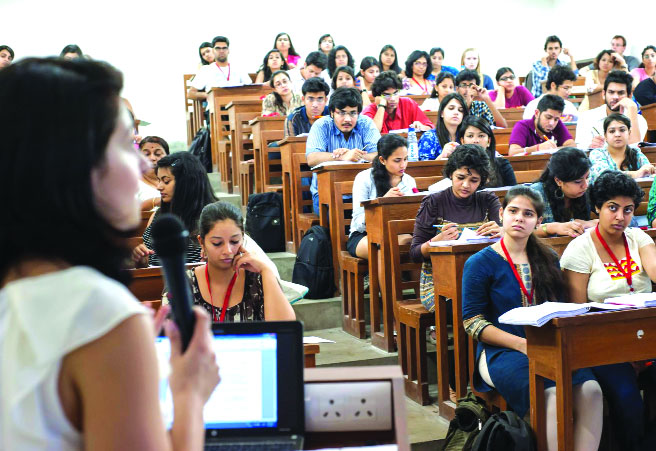GUEST COLUMN : New system of accreditation to be applied by NAAC soon

 Govind Singh Rajwar
Govind Singh Rajwar
The National Assessment and Accreditation Council (NAAC), an autonomous body of the University Grants Commission (UGC), is responsible for the assessment and accreditation of Higher Education Institutions (HEIs) of the country. By accreditation of the HEIs which include Central, State and private universities and colleges/institutes, NAAC ensures the assessment of the quality of higher education in the country. Many parameters are taken into account in the accreditation process of HEIs in the Revised Accreditation Framework (RAF), which include infrastructural facilities, teaching and learning process, designing of curriculum, assessment and examination methodology, student progression, financial and administrative management and best practices adopted by the institution, among others. The quantitative assessment includes the major part of assessment and includes validation of documents, certificates and pieces of evidence provided by the HEI, but the qualitative assessment is done in the institution during the visit by the peer team of NAAC assessors. The peer team verifies the infrastructural and other facilities, teaching process, research activities, library facilities, admission and examination system, student satisfaction and other aspects during its visit.
Now the NAAC has planned new reforms in the accreditation of universities and colleges in the country, which are slated to be applied soon. As per the announcement of the NAAC, Dr Radhakrishnan Committee, the apex committee on transformative reforms in accreditation had been approved by the Ministry of Education, Government of India. Based on the recommendations of this apex committee, the executive committee of NAAC had proposed to launch the reforms in two phases: Binary Accreditation and Maturity Based Graded Levels (MBGL). About 40 meetings were held by the apex committee and discipline-wise committees to complete the required manuals and process-related aspects. On the recommendations of the apex committee, the NAAC has planned to hold five regional workshops to elicit nationwide views on the manual before launching it in the next two months. The NAAC has also proposed to engage with the Higher Education departments/councils of various States to apprise them of the planned reforms in accreditation thereby enabling most institutions to participate in the new accreditation process. Thus, the planned reforms in accreditation will be put before the higher education bodies of various States for their participation.
The executive committee of NAAC has proposed some measures to be followed during the transition period and to ease the completion of pending applications under the present RAF. These include the acceptance of IIQA applications under the present methodology (RAF) up to last date of last month; HEIs with valid accreditation as per the present RAF whose validity is expiring between July 1, 2024 and the date of launch of Maturity Based Graded Levels (MBGL) to be extended for a maximum period of three months after the launch of MBGL; HEIs already accredited to continue to hold the accreditation with the grade till its validity exists; HEIs whose IIQA or SSR applications are under RAF may either opt for Binary accreditation (in such a case, the ongoing A & A process under RAF to be closed) or may decide to go ahead for A & A process under the current RAF and HEIs not accredited so far need to apply for binary accreditation as and when it is launched. During the valid period of accreditation, such institutes may apply for MBGL at any time once the MBGL is announced. Under the proposed MBGL, there may be different levels (1 and above) for national and global excellence for HEIs. This is required to differentiate between the universities and colleges showing high ranking in national and international ranking surveys.
The NAAC has been regularly upgrading the rules and guidelines for assessment and accreditation of the colleges and universities in the country to maintain the quality of higher education. In the current RAF, the grading system in accreditation includes the grades A++, A+, A, B++, B+, B, C and D (not accredited). As per data given by NAAC, the number of RAF-declared higher education institutions from July 1, 2017 to July 4, 2024 is 422 universities and 6,411 colleges (total 6,833).
(A member of NAAC Collegium, the author is Asia representative at the International Society of Ethnobiology and a former professor of botany. Views expressed are personal)






